10 Marvellous Madonna Paintings
10 paintings from across art history, focusing on Madonna, the Virgin Mary, mother of Jesus Christ.
Candy Bedworth 24 February 2025
28 February 2022 min Read
Contemporary American painters experiment with older and more traditional painting techniques and take those methods in new directions, showcasing an ongoing and often dazzling or thought-provoking collision of “old and new.” These artists often pay homage to icons of art history, either with a compositional nod to historical masterpieces or a more overt commentary. Many painters who are classically trained later decide to break the very rules they spent years learning, and as a result, their art becomes an embodiment of the tenet. Consider just a few examples of celebrated 21st-century American painters who infuse centuries-old techniques and motifs into new works.
As consumers of fine art, audiences tend to distinguish the contemporary from the classical in their minds. But there would be no contemporary art if not for the ever-present influence of the old masters. While contemporary American painters differ significantly in the extent to which they borrow from their historical influences, viewers can usually find the parallels if they look closely.
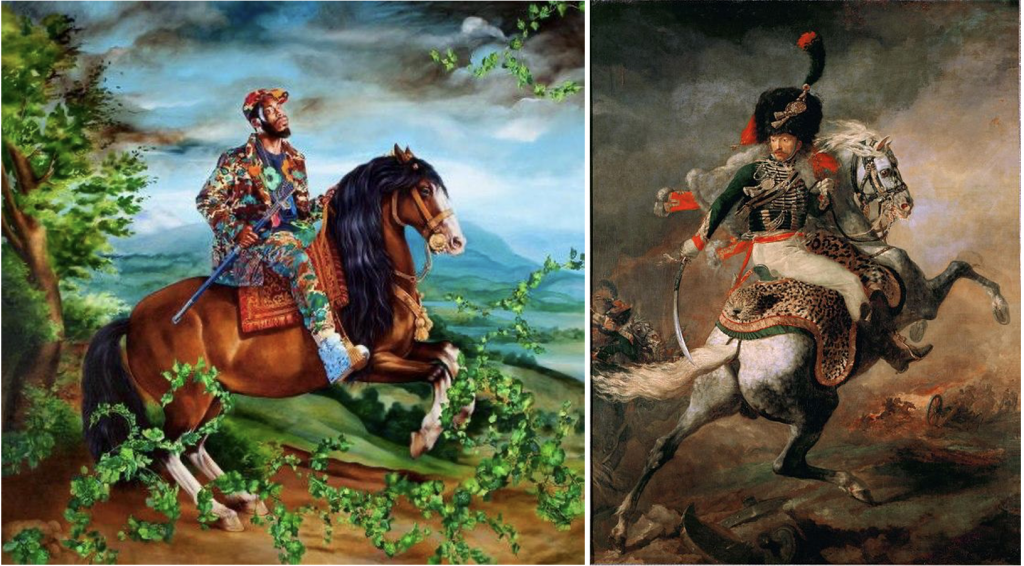
Left: Kehinde Wiley, Equestrian Portrait of Philip IV, 2017, Philbrook Museum of Art, Tulsa, OK, USA; Right: Théodore Géricault, The Charging Chasseur, 1812, Louvre, Paris, France.
Arguably one of the most popular American painters of our time, Kehinde Wiley celebrates the beauty of black subjects through eye-catching naturalistic portraiture. His unique style embraces the techniques of old masters to bring figures from politics and pop culture to life. His work – including his recent White House portrait for Barack Obama – makes use of intricate patterns and backgrounds that occasionally overlap with the subject, similar to classic textile design.
In some cases, he even recreates classic works with black subjects. For example, in his famed Officer of the Hussars, he recreated Théodore Géricault’s The Charging Chasseur using a young, sword-wielding African-American man in the foreground.
Research shows that exposure to art can increase empathy and tolerance, and Wiley uses his own medium to cast a light on the beauty, value, and power of people who have long been underrepresented and even denigrated in the Western canon of art.
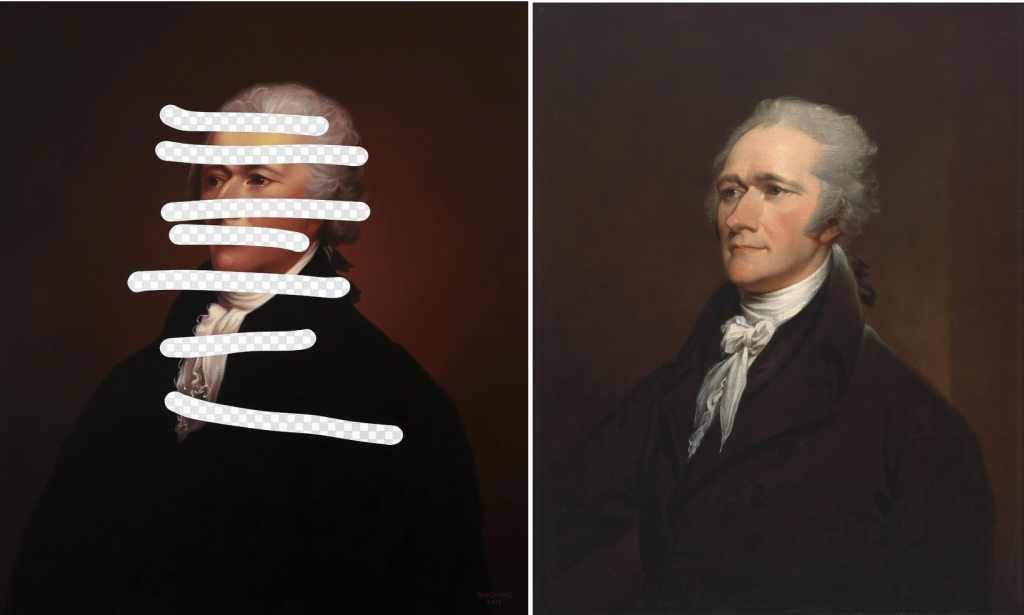
Left: Shawn Huckins, Redact (Alexander Hamilton Erasure No. 30), Foster/White Gallery, Seattle, WA, USA; Right: John Trumbull, Alexander Hamilton, 1806, National Portrait Gallery, Smithsonian Institution, Washington, DC, USA.
Much like Kehinde Wiley, Shawn Huckins is known for occasionally repurposing classical works through a modern lens. He’s perhaps best known for his meticulous recreations of classic portraits of figures like Robert E. Lee, Alexander Hamilton, and Martha Washington, all presented with 21st-century flourishes like colloquial text, social-media-inspired filtering, and faux-graphic-design elements. Each of these additions is designed to be compelling and thought-provoking in its own way, typically as a commentary on the very piece that’s being painstakingly recreated.
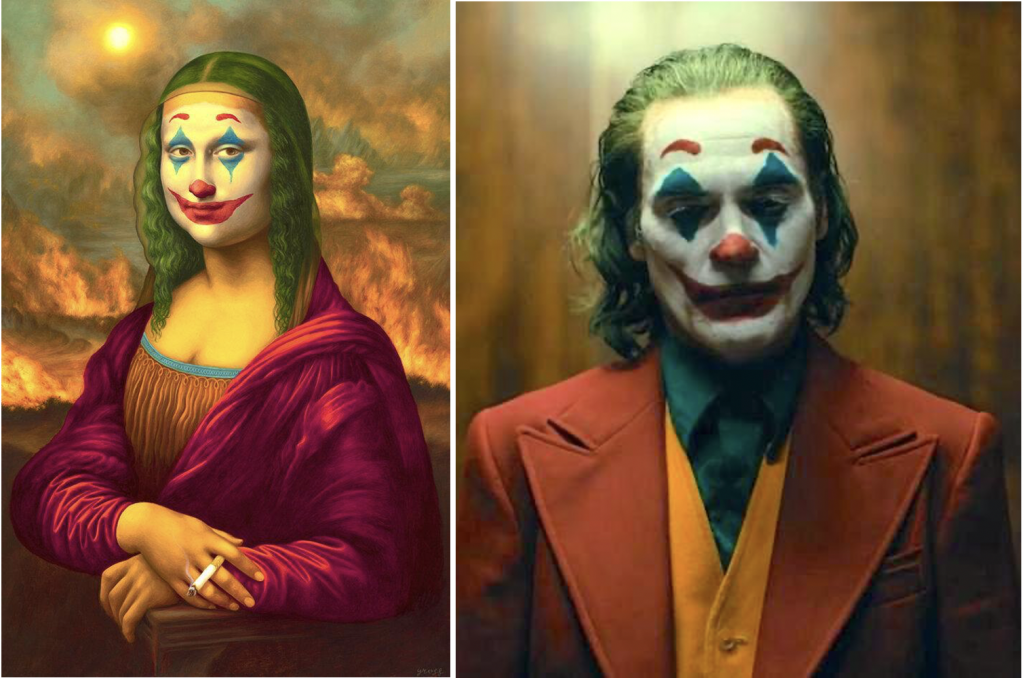
Left: Alex Gross, Mona Lisa Joker, 2020, Shout Arthub & Gallery, Hong Kong, China; Right: Movie still from Joker, directed by Todd Phillips, 2019, Warner Bros. IMDB.
A leader in the Pop Surrealism movement, American painter Alex Gross sometimes juxtaposes pop culture motifs with classic art as a means of commenting on issues like consumerism, globalization, and our perception of beauty.
One example is his famed Mona Lisa Joker, a recreation of Leonardo’s Mona Lisa in which the subject dons makeup inspired by Batman’s arch-nemesis. Much of his work—such as Approaching Storm, Hummingbird, Woman in the Dunes, and Daydreamer—also takes inspiration from the realist masters of the 19th century, as well.
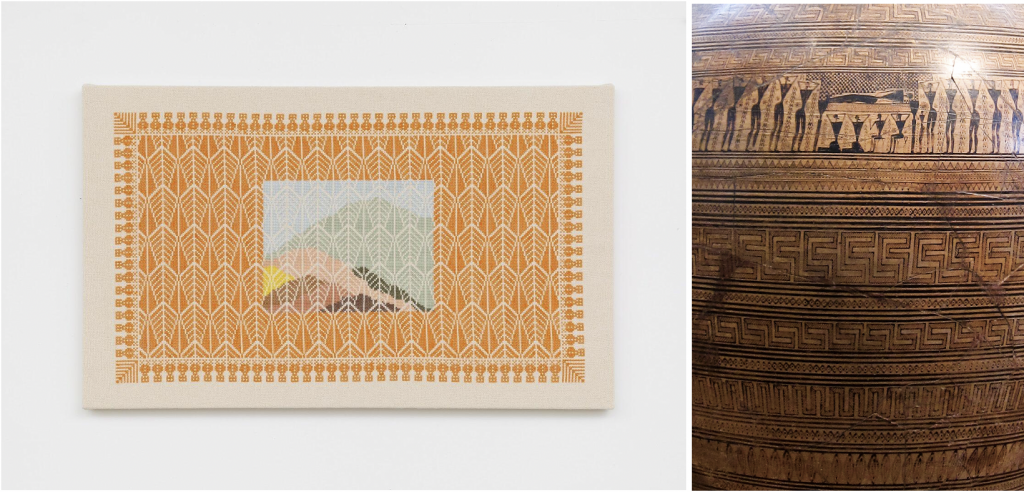
Left: Jordan Nassar, Under the Youthful Grass, 2020, James Cohan Gallery, New York, NY, USA; Right: Dipylon Amphora, 760-750 BC, National Archeological Museum, Athens, Greece. Photo by Sharon Mollerus via Flickr.
Jordan Nassar uses traditional Palestinian embroidery techniques to create patterned works of art that explore landscapes inspired by his family’s homeland. Each design is carefully mapped out and then stitched by hand.
Like perfectly crafted collages, the multicolored patterns give way to roaring hills, boundless skies, and mysterious horizons. Familiar, age-old geometric designs are uniquely arranged to create something entirely new.
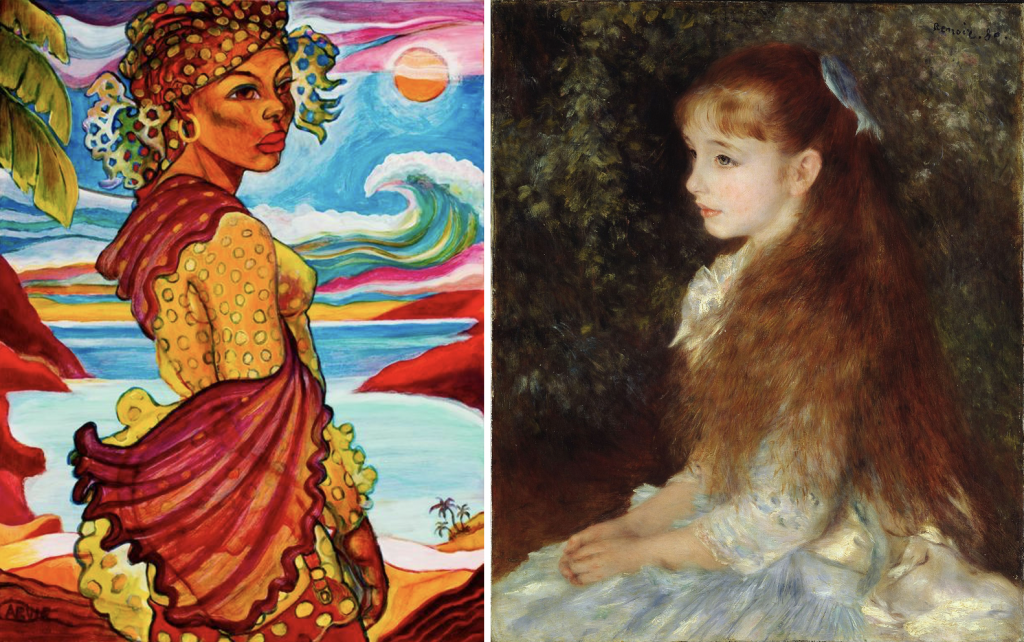
Left: Arvie Smith, Storm Brewing, 2015, Mark Woolley Gallery, Portland, OR, USA; Right: Pierre-Auguste Renoir, Portrait of Irène Cahen d’Anvers, 1880, E.G. Bührle Collection, Zürich, Switzerland.
The work of Arvie Smith has been described as “beauty in its potent form,” even though the work itself is often heartbreaking. Smith deals with issues of black oppression, stereotypes, and perceptions. He records history in bold colors, highlighting racial stereotypes and showing the will to survive amid the events in the United States surrounding police shooting black men.
Though the style incorporates elements of modern Expressionism, Pop art, and Harlem Renaissance, it’s the classical touches that really set him apart from his contemporaries. He commonly incorporates the dynamic symmetry of popular Renaissance art and adheres to strict color harmony like Monet, Renoir, or Seurat—albeit with bolder and more striking hues.
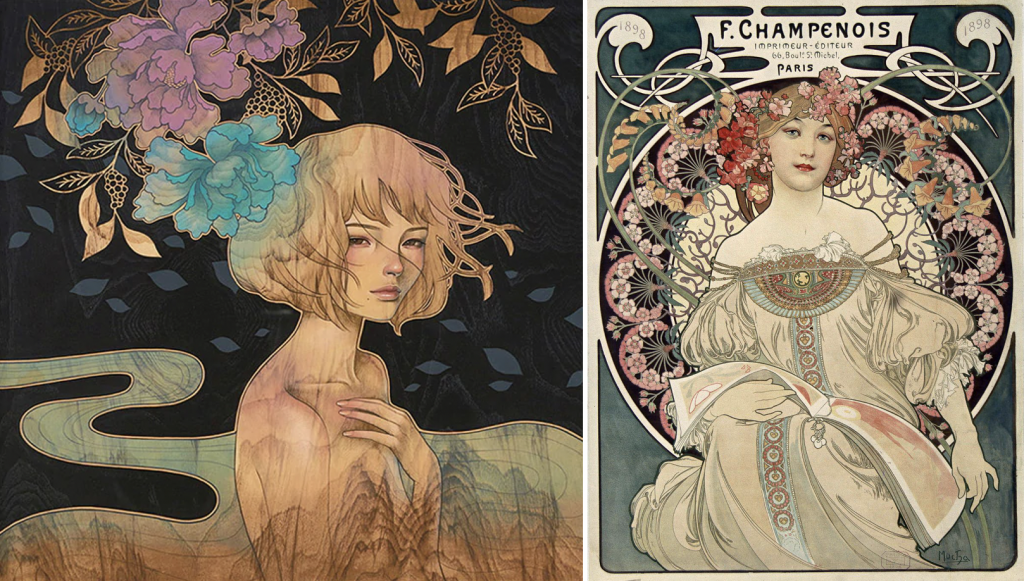
Left: Audrey Kawasaki, It Was You, Blackline Gallery, San Francisco, CA, USA; Right: Alphonse Mucha, Reverie, 1897, Gallica Digital Library (National Library of France), Paris, France.
The word “classic” doesn’t immediately jump to mind when you first observe the lowbrow and manga-inspired works of Audrey Kawasaki, but the old-world influences are in excellent supply. Woven into Kawasaki’s wood-panel paintings are the sinewy whiplash lines of Art Nouveau and the sensuality of late 19th-century aestheticism.
Her work celebrates both the mysterious and the erotic aspects of the classic symbolist masters without ever looking dated or antiquated. It’s easy to see why she counts Gustav Klimt and Alphonse Mucha among her primary influences.
There are countless examples of contemporary art icons, not only among American painters, who build upon the styles, motifs, and techniques of the centuries-old masters. If you look closely enough at any modern art exhibition, you can often see the linear perspectives that defined Renaissance art, the play of light and dark from Baroque works, the tiny patterns that made up pointillist masterworks, or the swift brushstrokes of Impressionism.
The reason for these influences is simple: Quality art is timeless. Where the fun begins is how contemporary artists take those influences and run with them in new, exciting directions.
Author’s bio
Cyd Ross is a British writer and content strategist based in California. Cyd has traveled extensively, from taking frequent trips to Europe to attending university in Taipei where she studied Mandarin and explored Asia. She enjoys learning about and experiencing new cultures through art and has a passion for animals.
DailyArt Magazine needs your support. Every contribution, however big or small, is very valuable for our future. Thanks to it, we will be able to sustain and grow the Magazine. Thank you for your help!